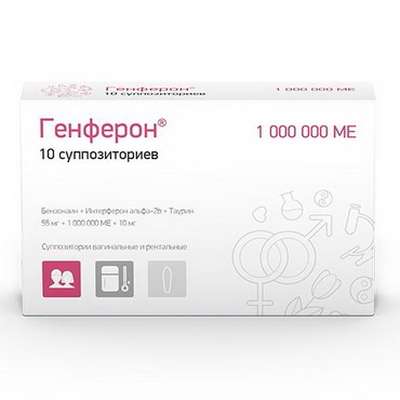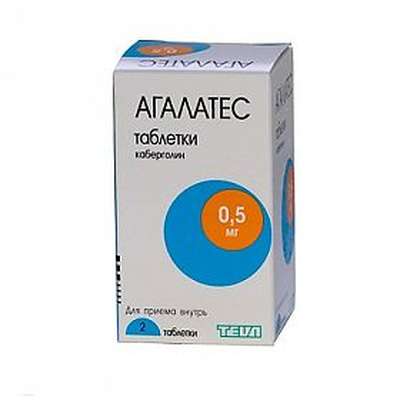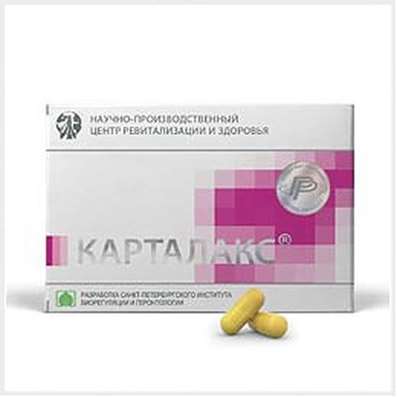Dopamine
04 Nov 2016
Physiologist Dr. Doping tells about Parkinson's disease, dopamine connection with schizophrenia and neuroleptic stories.
One of the most important mediators of the central nervous system is a substance called dopamine. Dopamine is known for a long time, somewhere in the middle of the XX century. This compound is specifically associated with the brain, primarily to the head, as opposed to, for example, acetylcholine, norepinephrine, which are active in the peripheral nervous system.
Dopamine is produced in neurons by our quite simple chemical chain reactions. It begins with the amino acid called tyrosine, tyrosine is converted further into a molecule called L-DOPA and L-DOPA has become dopamine. That is, a chain of two reactions, and L-DOPA in the chain is the precursor of dopamine, which further defines the use of L-Dopa molecule as the drug, but later about this.
Dopamine is really very important for the central nervous system, and if we begin to analyze the structure of the brain, we find dopamine neurons mainly in three areas: it is the hypothalamus and midbrain are two areas, one is called the substantia nigra, and the second - the ventral tegmental. If we look at the hypothalamus, we see that the dopamine neurons in the hypothalamus rather short processes - axons. They are mainly involved in hypothalamic problems and affect the release of certain hormones or needs some centers, a little involved in autonomic regulation, but in general it is pretty local functions, although, of course, important. For example, in the hypothalamus, dopamine may reduce food motivation, increase aggressiveness or enhance libido, that is a local, but important points.
The best known are those dopamine neurons, which are located just in the substantia nigra and ventral tegmental. The black substance because so called, that this area of the brain has a dark stain neurons there contain some amount of melanin - the dark pigment. The axons of these cells are coming up in the cerebral hemispheres, and they mostly end up in the basal ganglia. This block dopamine system is associated with the regulation of motor activity: how many releases dopamine black substance, depends largely on how much a person is physically active, the motor, loves to move, willing to move. People with active black substance with pleasure involved in sports, dance and generally move in space. People with black substance is not very active (and it mainly depends on the gene), respectively, motor more lazy and do not get as much pleasure from exercise, but they get pleasure from something else, from food or novelty - at least the case surrounding them often perceived as lazy.
If we look at where the axons are coming specifically the substantia nigra in the cerebral hemispheres, this area is called the basal ganglia. This is a very difficult area, located deep in the cerebral hemispheres. When we speak of the cerebral hemispheres, we especially remember the cortex, the area that is on the surface of the cerebral hemispheres and contains a large number of nerve cells with different functions. But deep in the cerebral hemispheres have large clusters of neurons, which at the time were called the basal ganglia. And there is plenty of anatomical structures: the striatum, the globus pallidus, the shell, the fence. All these complicated Latin names, but if you look at the whole basal ganglia, it is seen that somewhere 80% of the neurons in this group of structures involved in movement. It is the activity of these neurons and affects black substance. The remaining 20% of the basal ganglia are part of another system associated with the needs, motivations, emotions, and this unit I have to say.
That area, which has been associated with movements and substantia nigra, unfortunately, sometimes exposed to very characteristic disease called Parkinson's disease (Parkinson's disease). The problem is that the neurons of the substantia nigra were very "delicate", that is, among many of our brain cells of the substantia nigra neurons, perhaps the most vulnerable to neurodegeneration. With age, the neurons in this area accumulates in the cytoplasm at the pathologically abnormal proteins (called Parkin) and starts to fail. As the black substance is feeling worse and worse, the flow of dopamine in the basal ganglia is getting smaller, and for a long time the basal ganglia with the successful struggle, especially increasing the number of dopamine receptors. At some point, the resource is not enough, and begins to show parkinsonian symptoms: shaking hands (tremor), there is muscle tension (rigidity), a person is difficult to run a movement (akinesia). It's quite difficult motor disorder, which, of course, we try to somehow heal. The main drug helps here - it is just L-DOPA, a precursor of dopamine. This substance can be given in pill form, it can be long enough to help a person with Parkinson's, and to stop the symptoms, although, unfortunately, the introduction of this substance does not stop the neurodegeneration that is, it continues, therefore the dose has to constantly increase for ten, fifteen sometimes even twenty years. You can also add some Cortexin, Phenylpiracetam, Mexidol and Ladasten.
The second area is the ventral tegmental. The axons of the zone are in the cerebral cortex and in the part of the basal ganglia, which is engaged in precisely the needs, motivations and emotions. Dopamine produced by neurons in the ventral tegmental, in the cerebral cortex, largely determines the speed of information processing, and, if anything, the speed of our thinking. If a lot of dopamine in the system and the ventral tegmental be quite active, we see that information processes are fast, fast human brain. Such people may very well do the math, programming and all professions associated with abstract thinking.
Furthermore, this unit also gives us positive emotions associated with novelty. This is a very important part of our mental life, because our brains are very curious and new information biologically very important: we must be aware that changes in the outside world, these changes quickly detect and analyze. In addition, we are pleased with it, and to a person engaged in a science or an art, it is an essential component of mental life, because something compose or open - it's just wonderful. It turns out that dopamine is linked with positive emotions that correlate with novelty, creativity, sense of humor, because the joke - it is also a kind of told by the situation in which was a banal way out, and you were offered something unusual, some unbanal salt joke, and you laugh - it is also dopamine release.
Unfortunately, this system may also not work very well. If it works poorly for some reason (mostly genetic), the person is not enough with positive emotions associated with novelty, and this may be one of the components of depression. If this system works too much, thinking can become excessively fast twitch, a man can not concentrate for a long time and think the same thoughts. Sometimes sensory systems begin to generate signals at a time when there is no real stimuli. In the limit, it results in symptoms which is called schizophrenia. Unfortunately, schizophrenia is a very common disease: from 0.5 to 1% of the population suffer from this disease. In this case, the necessary medications that weaken the activity of the dopamine system. Such drugs do exist, they are a group of antipsychotics and dopamine receptor blockers are.
There are quite a few dopamine receptors, there are five basic types. If you look at different parts of the brain, we find first of all D-2 receptors, inhibiting various neural processes. And a lot of D-1 receptor, i.e. a first type of dopamine receptors that activate a variety of nervous processes. In some neural networks receptor D-1 and D-2 are inserted as competing blocks the receptors D-2 D-limiting Activity 1. It is very well seen in the basal ganglia. If we begin to use the dopamine receptor antagonist, the severity of the effects depends on what we get to the receptors.
The story begins with antipsychotic substances called chlorpromazine. Aminazin is rough antipsychotic effect not only on all types of dopamine receptors, but also to norepinephrine receptors. However chlorpromazine in the history of psychiatry has become an important drug, by which for the first time managed to arrest the pharmacological level, and severe schizophrenia and severe manic disorder. In the 1960s, they began to create more selectively acting drugs, mainly blocking receptors of Activity D-2. Current antipsychotics are just blockers receptor D-2 varying degrees of effectiveness, because the drugs are more demanded more mild. Fortunately, the light of schizophrenia is more common than severe, even from the point of view of pharmacological market is much more important to make light antipsychotics: they have a much wider sphere of distribution.
The primary target of action of antipsychotic drugs is the cerebral cortex and the basal ganglia, the part that is linked to emotions, needs, motivation. The basal ganglia have two structures: one called the amygdala (which is located deep in the temporal lobes), and the second structure - nucleus accumbens (translated as 'the nucleus accumbens transparent partitions'). These two structures are an important target for antipsychotic drugs, and nucleus accumbens are actively studied as a key center associated with the generation of positive emotions. We have most of the information flows associated with the fact that our body has successfully completed some activity: eat or avoid danger, learned something new or successfully multiplied, - go through the nucleus accumbens, and further signals from the structure, rising into the crust the cerebral hemispheres, define the processes of learning and memory formation. Therefore, this area is actively being studied, and there is an important neurotransmitter dopamine.
If used dopamine receptor agonists, that can receive and process the activation thinking centers and positive emotions, including nucleus accumbens. Known preparations of this kind, they belong to the group of psychomotor stimulants. A classic psychomotor stimulant is amphetamine - substance, open at the beginning of the XX century, has passed a complicated history. He tried to use as a drug that causes weight loss, and as a psychomotor stimulant, and as a sports doping. Currently, he is an illegal drug, and at the same time is sometimes used in hospital for severe depression. This category applies to a very powerful and dangerous narcotic drug called cocaine. It also greatly increases the activity of the dopamine system and very quickly causes the formation of addiction and dependence, seriously altering the state of neural networks and in particular the centers of positive emotions, such as nucleus accumbens.

 Cart
Cart





